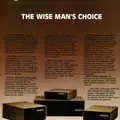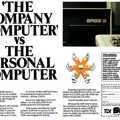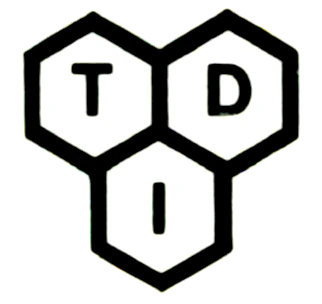
TDI/Sage Advert - July 1983
From Personal Computer World
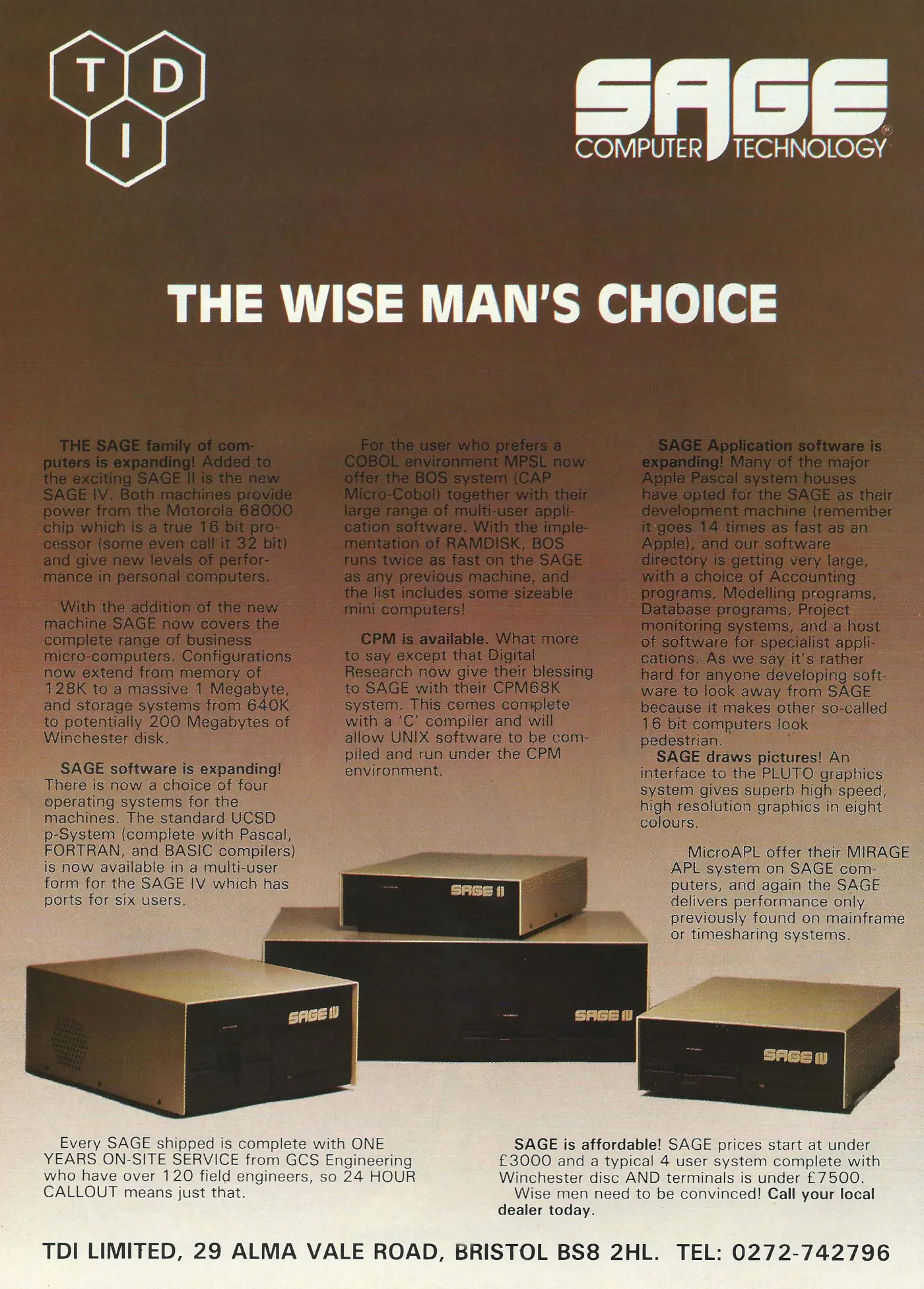
Sage Computer Technology: The wise man's choice
The Sage family of micros, looking as they do like 5.25" floppy disk units in this advert - which is another accessiblity fail with its low-contrast black-text-on-dark-brown colour scheme - seemed to have quickly built up a reputation as speed machines.
They used Motorola's 68000 - a 32/16-bit CPU, which was about the best available at the time - but ran Pascal on the unusual UCSD p-System. The CPU ran at 8MHz and could compile Pascal programs at the rate of 1800 lines per second.
Developed at the University of California, San Diego, the p-System came out of work in the late 1970s to create a common Pascal platform that would run on both the university's DEC PDP-11s and various microcomputers of the day.
It ended up referring to itself as the Universal Operating System, and its virtual machine architecture was an influence on James Gosling's Java, which was first released in 1996.
It was also one of the three operating systems offered for IBM's original 5150 PC - the other two being MS-DOS and CP/M-86. It was more expensive than the others and as a result proved unpopular, much like CP/M-86 which was also priced to be more expensive than MS-DOS.
Running under the p-System, it was also possible to configure an internal chunk of the Sage's memory as a RAM disk, and even boot the machine in to this. This helped make the machine seem very fast, with "response times for everything, except jobs like disk formatting, [being] measured in fractions of a second"[1].
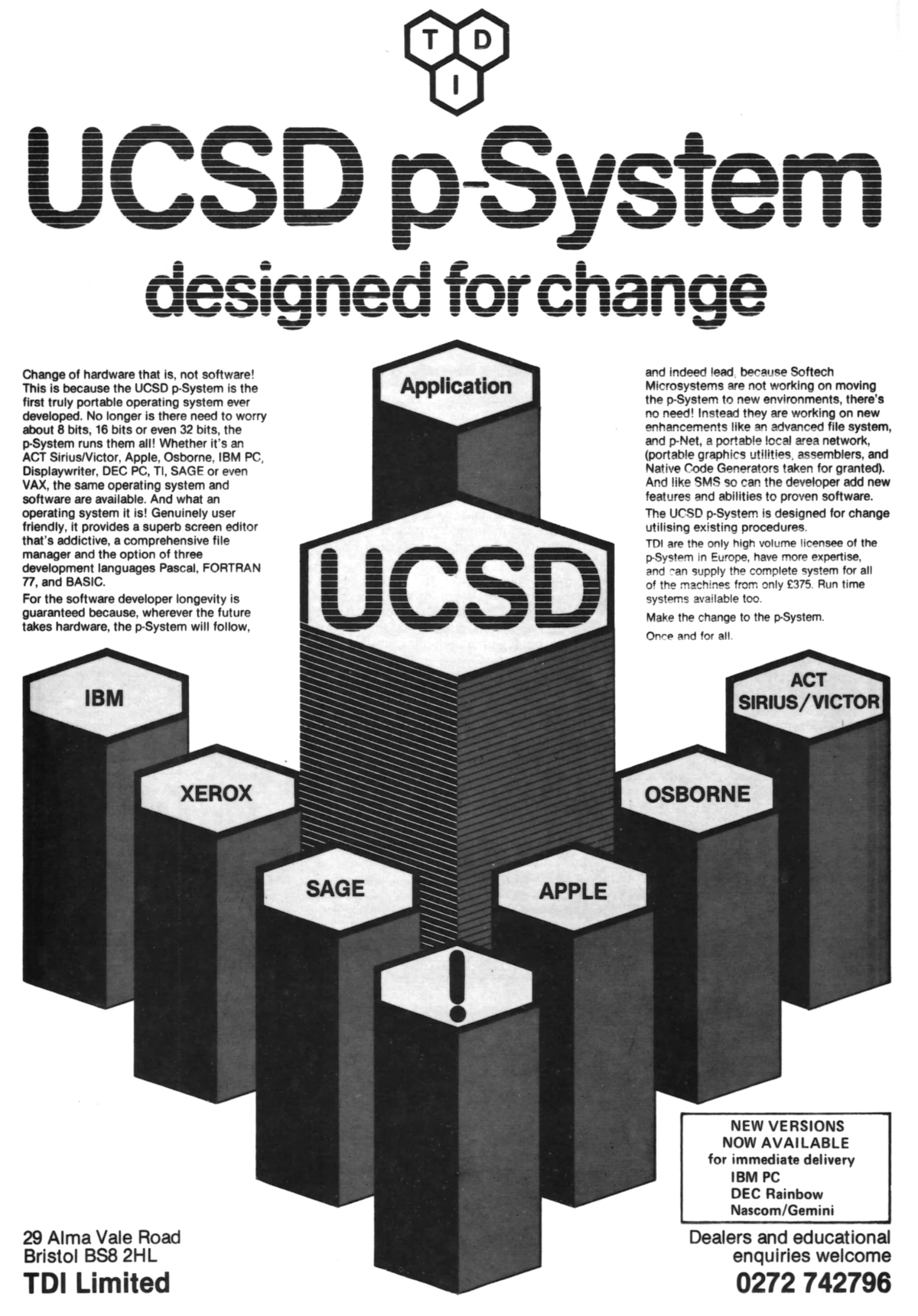
A TDI advert for its version of UCSD's p-System, which was available for DEC's Rainbow, Nascom and Gemini micros, the IBM PC and TDI's own Sage machines
Designed by company boss Rod Coleman, who had built his first Arithmetic and Logic Unit (ALU) whilst in his early teens, the Sage II was developed from scratch as a single-user 68000 machine, at a time when this particular chip was used more commonly to drive multi-user Unix systems.
Coleman also said that it was "somewhat of a mixture of Apple Computer technology and Altos packaging".
The entry-level system with 128K memory and a single 320K 40-track floppy, plus p-System version 4.1, Pascal, BASIC and Fortran compilers, a 68000 Macro assembler and on-site service for a year, retailed for £2,870, or about £12,600 in 2025.
The software itself was perhaps unusal enough that TDI was also - unusually - offering a maintenance program for it as a separate option, with an acknowledgement that software was also never perfect and that "sooner or later someone will want to do something that is in the manual but just won't happen". TDI's technical chief Roger Howarth stated:
"Most software has some sort of guarantee, but it's rarely worth the paper it's not written on. We're offering a maintenance contract on the p-System in the same way were' offering one on the Sage".
Custom support for the p-System was free for the first three months of ownership, via the company's support services helpline. After that, it was £50 for the rest of the first year, and £100 (about £440 in 2025) per year thereafter. Guy Kewney writing in August 1983's Personal Computer World suggested that:
"The idea is a good one, and I hope it catches on[2]".
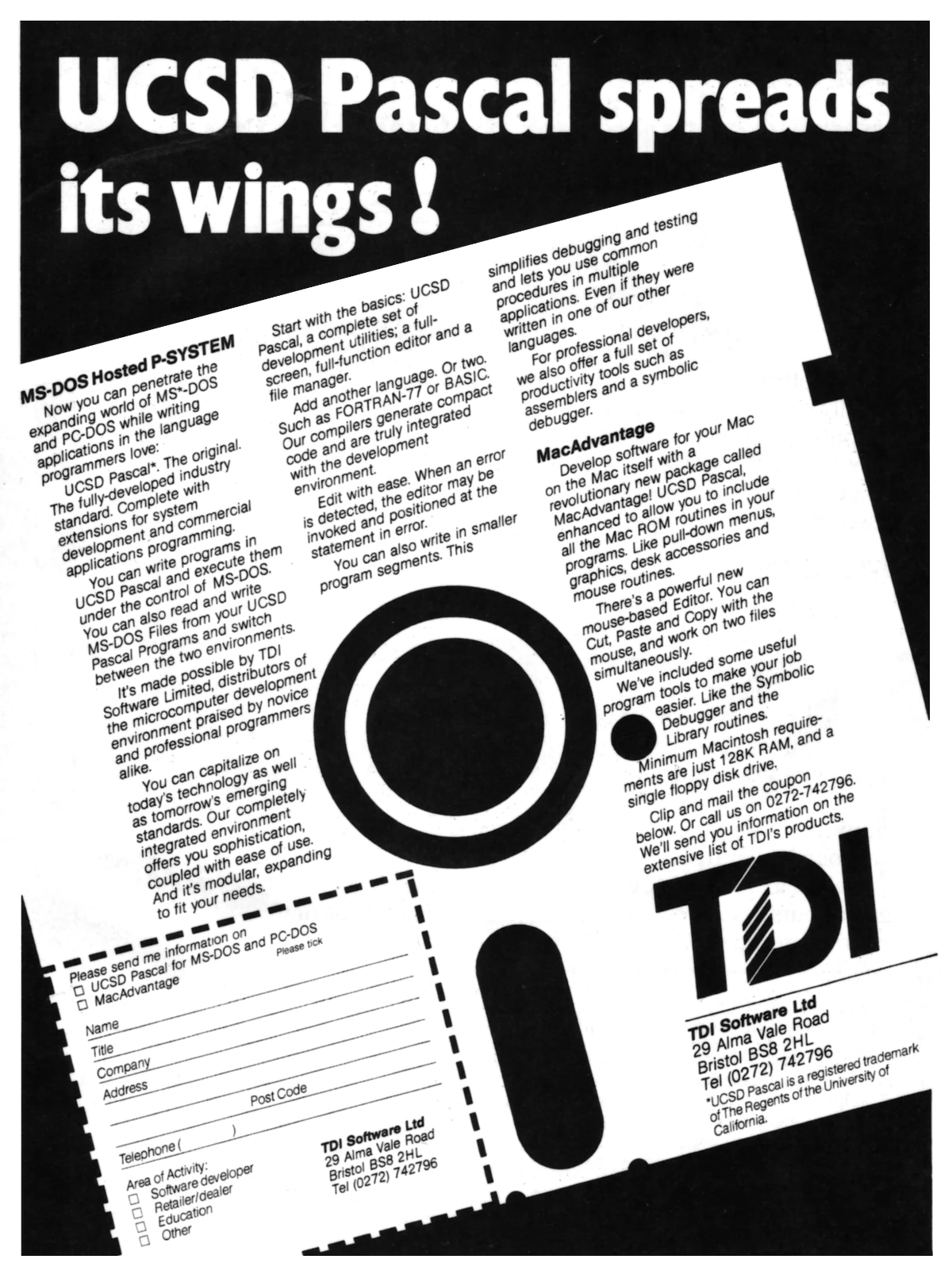
Another advert from TDI's software division for UCSD Pascal, now available for both MS-DOS as a hosted p-System, as well as for Apple's Macintosh, as the MacAdvantage product. From Personal Computer World, March 1985
Shortly after the launch of the Sage II, a multi-user version - the Sage IV - with 512K memory, six serial ports (for terminals and/or printers) and a hard-disk controller capable of supporting five Winchester drives was announced at Comdex in Las Vegas.
When asked what happened to the Sage III, Coleman referred to the ill-fated Apple III:
"We felt a bit superstitious about that, after the Apple III. There will never be a Sage III"[3].
In the summer of 1985, Personal Computer World published its updated benchmarks. This revealed that despite being nearly two and a half years old, the p-Code-running Sage II was still the fastest machine available, topping the charts at a benchmark average of 4.47 seconds.
This was nearly twice as fast as the end-of-1984 IBM PC AT and Olivetti's M24 and 17 times faster than TI's failed TI-99/4A. The next seventeen micros in the chart were all newer machines than the Sage.
Elsewhere, the BBC Micro was still holding on well at spot 19, above machines like the Sirius 1 and IBM's original PC[4].
Date created: 27 October 2014
Last updated: 28 November 2025
Hint: use left and right cursor keys to navigate between adverts.
Sources
Text and otherwise-uncredited photos © nosher.net 2025. Dollar/GBP conversions, where used, assume $1.50 to £1. "Now" prices are calculated dynamically using average RPI per year.
